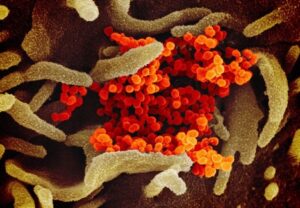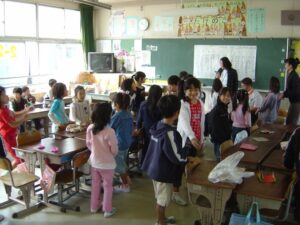
Source: Wendel Moretti
The brain plays a crucial role in how the body responds to our environment. There are over 86 billion neurons powering the brain1, conducting electrical signals and allowing for a wide range of functions including long term memory, short term memory, motor function, sensory, emotions, and critical thinking. For most, this complex system works remarkably well for a long time – but what happens when someone loses one of their five senses? Can the brain adapt, and make up for the function that is lost?
Losing the ability to see has impacted the lives of many. According to the International Agency for the Prevention of Blindness’s Vision Atlas, currently 43 million people are blind globally and 295 million people have a visual impairment2. This is a devastating condition. Yet, many can adapt and continue living meaningful lives. Despite the setbacks that come with loss of sight, the brain has a unique ability to enhance other senses.
Researchers have spent many decades studying the brain and its many interesting capabilities, properties, and unique features. One very active area of research is the study of neuroplasticity – the adaptation that the brain undergoes as an individual goes through life, learning new skills and developing new habits3. Understanding neuroplasticity is also key to understanding how the brain adapts to loss of vision. There is general recognition in the research community that people who have been blind from birth are able to develop extraordinary sensory abilities due to compensation, where the brain re-routes neural pathways from dysfunctional to functional areas4,5.
For example, one study found that children who are born blind or lost their sight at an early age have their visual cortex intake both sound and touch6. Another study enrolled 28 participants with profound ocular blindness, to examine anatomical and functional changes in the brain with a multimodal magnetic resonance (MR)-based imaging7. They found that the blind individuals showed a decrease in cortical volume – the amount of neurons and other cells in the brain – and thickness around the visual processing areas in the occipital and temporal cortices. However, the blind individuals also had an increase in cortical volume within the parietal cortex7. In addition, white matter connectivity was increased between the frontal and temporal areas involved in language processing7.
In a third study, researchers examined 23 subjects with Magnetic Reasoning Imaging (MRI) to observe the visual cortex for both blind and non-blind participants. They found an increase in the visual cortex functionality of blind participants. Specifically, the cortical thickness around the visual aspect in the brain was higher compared to the non-blind participants8. Another study observed the structural changes in the brain using MRI on 28 participants. The study had 12 blind participants and 16 participants with normal sight. Researchers found the 12 blind participants showcased enhanced neural connections in regions responsible for memory, language, and sensory motor functionality9.
In addition to the evident structural changes in the brain, there are also changes in the ability of blind people to use their other four senses. For smell, a study was done with a group of 11 blind and 14 sighted participants. The goal of the study was to examine and identify the odor perception and awareness of odor using a Sniffin Sticks test4. In addition, participants completed an Odor Awareness Scale (OAS). The results here were mixed – blind subjects received a lower odor detection level compared to the slighted subjects. However, the blind participants did perform better on the OAS test for odor awareness4.
To see whether taste is impacted by blindness, researchers hypothesized visual deprivation from birth could impact taste sensitivity and dieting behavior. A sample of 13 visually impaired participants and 13 sighted participants were given a taste detection and identification test with a set 5 tastes (sweet, sour, bitter, salty, and umami or savory). Following the tests, each participant filled out several questionnaires regarding eating habits. The results showed that blind participants tend to have better taste detection and taste identification compared to sighted participants. Researchers also found the blind participants rely more heavily on internal hunger and satiety cues10.
Hearing has also been tested by researchers comparing both sighted and blind participants. Studies have shown that blind people have an increased sensitivity level to non-self-generated echoic information, were able to isolate an object using echoic information, and better cues such as level and binaural differences11.
As these studies on blindness and its impacts on the brain demonstrate, neuroplasticity and sensory compensation are powerful forces for adaptation. Further studies – ideally longitudinal in nature to capture how the brain adapts over time – will provide further understanding of how the brain adapts when it loses a function, whether it be sight, one of the additional four senses, or some other cognitive ability.
References
- The plastic fantastic brain: Why losing one sense rewires others. (2016). Fred Hutch https://www.fredhutch.org/en/news/center-news/2016/01/losing-senses-rewires-others-study.html
- Reveals, G. (2023). blindness was slowing prior to pandemic study. Global blindness was slowing prior to pandemic study reveals. Orbis https://www.orbis.org/en/news/2021/new-global-blindness-data
- Puderbaugh, M. & Emmady, P. D. Neuroplasticity. in StatPearls (StatPearls Publishing, 2023).
- Beaulieu-Lefebvre, M., Schneider, F. C., Kupers, R. & Ptito, M. (2011). Odor perception and odor awareness in congenital blindness. Brain Res. Bull. 84, 206–209
- Pieniak, M., Lachowicz-Tabaczek, K., Karwowski, M. & Oleszkiewicz, A. (2022). Sensory compensation beliefs among blind and sighted individuals. Scand. J. Psychol. 63, 72–82
- NeuWrite West — Supersensors: How the loss of one sense impacts the others. (2017). NeuWrite West http://www.neuwritewest.org/blog/supersensors-how-the-loss-of-one-sense-impacts-the-others
- Bauer, C. M. et al. (2017). Multimodal MR-imaging reveals large-scale structural and functional connectivity changes in profound early blindness. PLOS ONE 12, e0173064
- Silva, P. R. et al. (2018). Neuroplasticity in visual impairments. Neurol. Int. 10, 7326
- Brain ‘rewires’ itself to enhance other senses in blind people. ScienceDaily https://www.sciencedaily.com/releases/2017/03/170322143236.htm.
- Gagnon, L., Kupers, R. & Ptito, M. (2013). Reduced Taste Sensitivity in Congenital Blindness. Chem. Senses 38, 509–517
- Kolarik, A. J., Cirstea, S., Pardhan, S. & Moore, B. C. J. (2014). A summary of research investigating echolocation abilities of blind and sighted humans. Hear. Res. 310, 60–68
Related Posts
Addressing Medical Inequities in Healthcare Professional Deserts
This publication is in proud partnership with Project UNITY’s Catalyst Academy 2023...
Read MoreThe “Old Friends” Hypothesis and the COVID-19 Pandemic
Authors: Sakeena Badrane1, Vivek Babu2, Sanah Handu1 1University of Pittsburgh,...
Read MoreA Novel Mental Health Literacy Education Program for Pre-Teens
Figure: A typical elementary school classroom in Japan (Cassidy, 2005). Source:...
Read MoreThe Public Health Implications of Chronic Kidney Disease in San Diego
This publication is in proud partnership with Project UNITY’s Catalyst Academy 2024...
Read MoreIncarceration and Motherhood: A Brief Overview of Maternal Health Issues in American Prisons
Figure 1: Guards in prisons are able to put prisoners...
Read MoreAccording to New Research, Blue Whale Migrations Can Be Studied Through Song
Figure 1: A blue whale’s fluke (tail fin) sticks out...
Read MoreFelix Miyago






